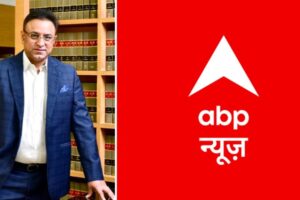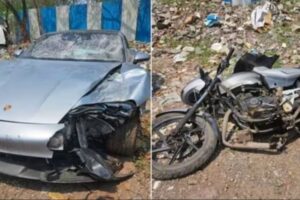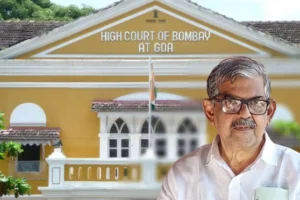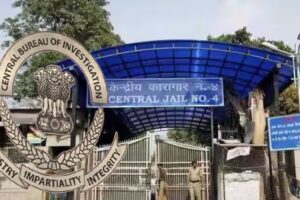
At midnight on 15 August 1947, the members of the Constituent Assembly gathered to witness India’s independence. Subsequently, the Constituent Assembly adopted the Constitution of India in 1950. The question arises that how did the new constitutional system provide the right to protest to the free citizens of a free country?
The framers of the Constitution preserved the benefits of democracy and civil liberties, such as freedom of speech and expression, which were not recognized and protected by the British rulers. The framers of the Constitution acknowledged that there is a tradition in the political life of India of expressing grievances through peaceful protest.
‘Democracy’ is a government run by popular public opinion. Therefore, the means and resources for forming public opinion should be safe for the people of a democratic nation. Thus, it was necessary for the new India to include the right to protest peacefully among the fundamental rights.
Freedom of Speech & Peaceful Assembly
Therefore, the freedom of speech and expression under Article 19(1)(a) and the right to assemble peacefully without arms under Article 19(1)(b) of the Constitution are the cornerstone of the Constitution of India.
Further, specifically Article 19(1)(c) and Article 19(1)(d) respectively give the right to form an association or union and to move freely throughout India. These articles have given wide rights to protest to Indian citizens. That is, any citizen or citizen or group of citizens living within the geographical boundaries of India can reach the national capital and protest.
Protests in India mainly include dharnas, demonstrations, strikes and bandhs. If non-violent, these forms are considered as expressions of freedom of speech and expression, peaceful assembly and association and a free movement throughout the territory of India.
Kameshwar Prasad v. State of Bihar
One of the earliest cases where the Supreme Court recognized the right to demonstrate, a form of the right to protest, as a freedom guaranteed under Article 19(1)(a) and Article 19(1)(b), Kameshwar Prasad vs. State of Bihar. In this case, on 22.02.1962, a seven-judge bench of the Supreme Court comprising Justice Gajendra Gadkar, Justice PV Sarkar, Justice AK Wanchoo, Justice KN Gupta, Justice KC Das, Justice Iyengar and Justice N Rajagopala – Said: “…a demonstration is an expression of the feelings or sensibilities of an individual or group. Thus it is intended to convey its ideas to others (to the government). So in reality the actions of the protesters are a form of speech or expression….”
Accordingly, the Supreme Court struck down that part of the impugned rule which prohibited ‘performance of any kind’ as it went against the rights of the appellants guaranteed under Article 19(1)(a) and Article 19(1)(b). Violated rights.
Himmat Lal Shah v. State of Maharashtra
However, Rule (7) made under Section 33(1) of the Bombay Police Act (1951) was challenged in the case Himmat Lal Shah v. State of Maharashtra. The Appellant claimed that using the said rules, the police refused permission to hold a public meeting. He also claimed that this is a violation of fundamental rights under Articles 19(1)(a) and 19(1)(b). The apex court found that Rule (7) imposed an unreasonable restriction on Article 19(1)(b) and held it to be a violation of the same.
“Freedom of rally, meeting or assembly is an essential element of any democratic system. At the core of this concept lies the right of citizens to meet face to face with others to discuss their ideas and problems – religious, political, economic or social. Public debate and discussion is the right to express one’s views during debates on radio and television, orally and by printing pamphlets and to present one’s views, demands and suggestions among the general public and the government through digital media. The basic assumption in democratic politics is that government will be based on the consent of the governed (voters). But the consent of the governed (voters) implies not only that the consent will be hoax but also that it will be based on adequate information and discussion….”
Right to Protest a Fundamental Right
In India, the constitutional courts gradually solidified the right to protest as a fundamental right. For example, in the Ramlila Maidan incident, Justice Swatantra Kumar echoed the idea of the right to protest as a fundamental right. “Freedom of expression, right to assemble and demonstrate by organizing protests and peaceful agitation are the basic features of the democratic system. People of a democratic country like ours have the right to raise voice against the decisions and actions of the government or express displeasure over the actions of the government on any topic of social or national importance.
Furthermore, the court also said that the government should respect and encourage such rights. Therefore, it is an overriding duty of the State to promote and support the right to freedom of speech and expression in its fullest sense. Not to violate rights by misuse of administrative and legislative powers in the name of reasonable restrictions.
Socio-political organizations have given rise to several widespread protests in India. For example, the Dasholi Gram Swarajya Sangh, an organization of a handful of local villagers, was the soul and body of the Chipko movement.
Guarantee of Article 19(1)(d)
Furthermore, Article 19(1)(d) guarantees the citizens of India the right of free movement throughout India. Thus, Article 19(1)(d) provides the right to carry out peaceful marches and processions. In the present case, i.e. the farmers of Punjab or other states have got the right to come to Delhi and protest, take out march and rally under Article 19(1)(d) of the Constitution. It is a violation of the Constitution for any government to restrict their rights by erecting barricades or creating obstacles.
…but the Constitution gives the right to carry out peaceful marches, processions and temporary demonstrations. The Constitution says that a march, procession or rally should not cause inconvenience to any local resident or passerby. There is no right to carry any kind of sticks or weapons in such demonstrations. There should be no abusive language in the march, procession, rally or demonstration, or any conspiracy to spread riots or start a struggle against the nation under the guise of demonstration.
Aneet Thakur v. State of Jammu and Kashmir
In the case of Aneet Thakur vs State of Jammu and Kashmir 2012, the bench of Justice AK Sikri and Justice RK Aggarwal clearly stated that ‘the right to move freely given under Article 19(1)(d) re-ensures So that the petitioners can carry out a peaceful march. But those who take out the march will be non-violent and unarmed.
The right to protest in India is also protected by Article 21. When Article 21 is read with the Directive Principles of State Policy, they explain and provide protection to the fundamental rights.
Article 21 woven so beautifully with Article 38(1)
The fundamental rights have been woven so beautifully in the Indian Constitution that if any one element remains weak, it has been strengthened by some other article of the Constitution. For example, along with Article 21, Article 38(1) is interpreted to give effect to the fundamental right to protest. Article 38(1) suggests the obligation of the State to assist its citizens to create a social order that promotes social, economic and political justice.
In such a social system, the right to protest has essentially constitutional recognition, which is also an essential part of national life. Thus, when Article 38(1) is given effect by a broad interpretation of Article 21, it leads us to constitutional recognition of the right to protest.
Article 19, Article 21 and Article 38 of the Indian Constitution have given the fundamental right to protest but it is also important to see that these rights are not misused and if it is being misused somewhere then what is the solution? Because no freedom of expression or speech, no freedom of protest, no freedom of procession and march, can be complete unless some absolutely reasonable restriction or limitation is imposed.
Misuse of Article 19, Black Spot on Protest Tradition
Various constitutional provisions and constitutional principles provide powers to the government to ensure that public meetings, protests, dharnas or marches and the gatherings and processions should not become ‘illegal’. As seen during ‘Farmers Protest 2020-21′. On 26 January, Republic Day, anarchists in the guise of farmers flouted the law. Tried to capture the Red Fort. The anarchist elements on tractors left no stone unturned to tarnish the honor and dignity of the nation under the guise of farmers’ movement. An attempt was made to hoist a flag of a different identity along with the tricolor on the ramparts of the Red Fort.
Well-known legal expert Prof. MP Jain has written in his book that the right to protest should be exercised in such a way that it does not encroach on the fundamental rights of other citizens and does not become a means of suppressing sentiments. Pro. Jain has written that since the right to express protest originally originates from Article 19, reasonable restrictions on Article 19 will also apply to the right. Furthermore, the restriction ‘subject to the protection of the State and public order’ is of paramount importance.
The hooliganism that took place at the Red Fort in Delhi on 26 January 2021 is a black spot on the tradition of protests. To control such protests, Section 144 is imposed by the local administration to prevent disorders and unnecessary hindrances and troubles. The Supreme Court has also acknowledged that using Section 144 of CrPC is a good measure to maintain public order by curbing uncontrolled protests.
The jurisprudential basis of the principles of the Indian Constitution is that every fundamental right does not make any separate provision for a particular person or class but treats it equally. The Indian Constitution balances one right with every other contrary right.
Shaheen Bagh Protest
Anti-CAA protesters blocked the public road. Due to which there was a conflict between the rights of the protesters and the interests of the daily commuters. In this case, the Supreme Court gave priority to the rights of the general public over the rights of the protesters, and the court also said that “democracy and dissent go together, but demonstrations expressing dissent should take place only at designated places. …We cannot accept the arguments of the applicants (protesters) that whenever they wish to protest, they can assemble in indefinite numbers.”





